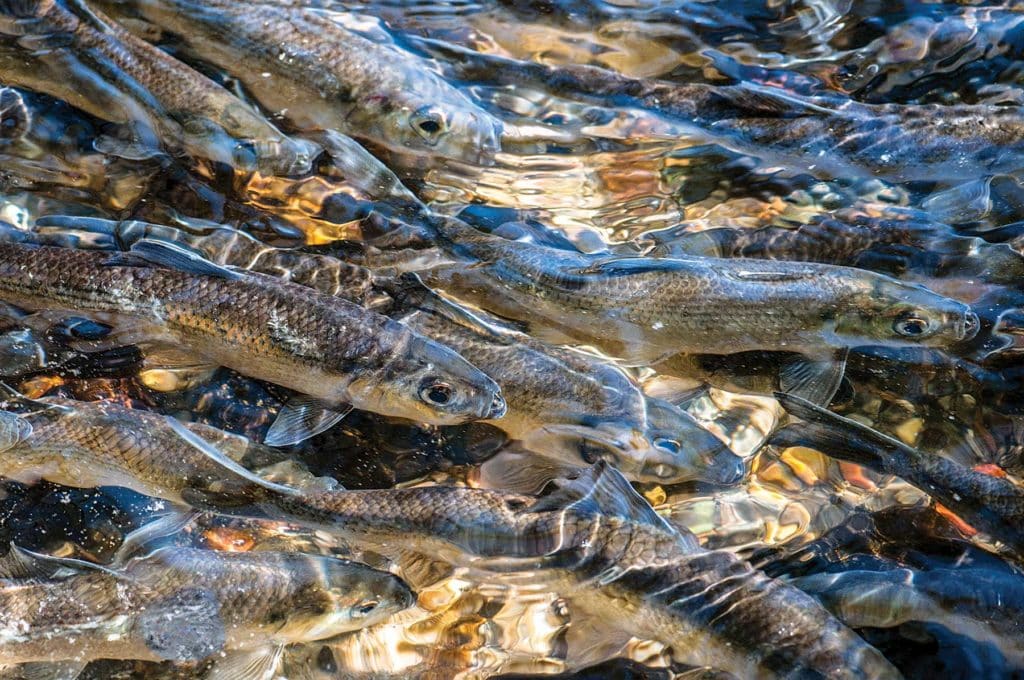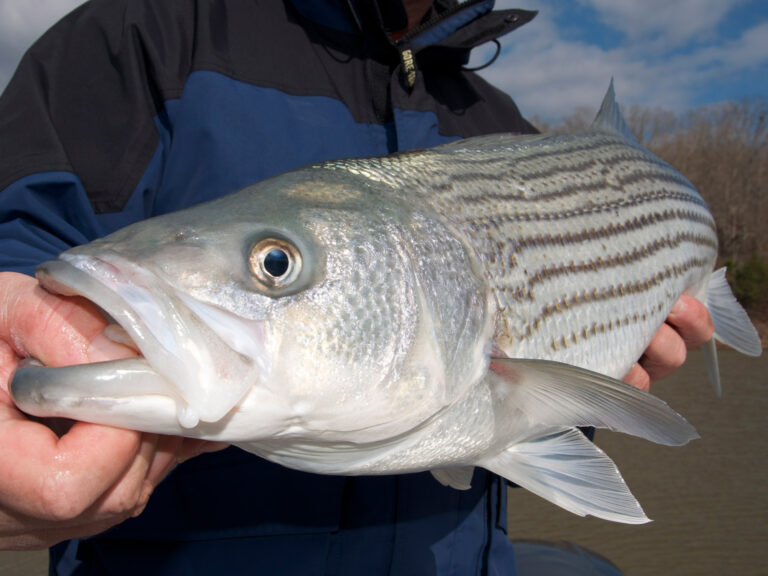
On the high seas, NOAA Fisheries -research vessels conduct index surveys to understand how pelagic -populations are trending. In the process they have killed a lot of fish. For anadromous fish populations, there are a variety of manual and electronic counting methods. Wouldn’t it be great if researchers could come up with the needed data without killing any fish or installing complex electronic monitoring?
We may be getting closer to that day. For the open-ocean data needs, the UMass Dartmouth School for Marine Science & Technology has been working on a project that can count fish going through an open-ended net. Researchers, led by Kevin Stokesbury, Ph.D., set up a bottom-tending mobile-gear net to fish just like a real trawl, even though the fish bag is not there. Cameras near the front or open end of the net film all the fish as they pass through the throat of the net into what would normally be the bag or cod end. Bingo! Just count all the kinds and numbers of fish and you can get the necessary data. Easy, right?
The answer is not really. If the fish came through the narrow part of the net in dribs and drabs, then counting and sorting would be easier. However, sometimes they come through the net at what seems to be blinding speed and frequency. I have watched the video and, like most, I could pick out obvious fish species and numbers. However, at best, that was about 5 percent of what went through. So, the researchers would actually fish with a cod end in place as well as the cameras. That way they could simply count and sort the fish caught and compare that to what was observed on the video. Over time, they should be able to program a computer to do the observation and counting in a lab setting. It will take time and a bunch of tows where the actual catch is calibrated to what the computer sees, but it could make the ocean fish data collection a lot easier and benign to the fish.
Also being studied is the use of sonar to estimate the amount of forage base, such as herring. We know that sonar has been perfected and used for years to find fish, and it would seem that counting fish will be a function comparing what the sonar sees to actual catches over time. Like the trawl fishery, perfecting this will take a lot of -repetition and a way to ground-truth sonar images to the actual catch. But it is doable and exciting research.
All along our coasts there have been substantial ups and downs of anadromous fish runs in rivers and streams for a variety of reasons. Getting a handle on these fish populations has required the installation of a lot of electronic counting devices, which means that only a few of the larger runs get monitored. Others require manual labor and some level of estimation. Many of the lesser — in size, not importance — watersheds do not get surveyed at all.
Back in 2013, NOAA Fisheries, the Atlantic States Marine Fisheries Commission and other partners collaborated to implement a coastwide program that builds upon other ongoing efforts to proactively conserve river herring and address data gaps. More -recently, -ASMFC awarded a grant to East -Carolina University to further ground-truth a new way to survey river -herring (i.e., alewife and blueback) using -environmental DNA (eDNA).
The use of eDNA for biological research and monitoring is relatively new. Environmental DNA is DNA that is collected from any number of sources, such as soil, seawater or even air, rather than directly sampled from an individual, in this case, fish. As various organisms live and move within the environment, DNA is expelled and accumulates in their surroundings. Sources of eDNA could include, but are not limited to, waste, mucus, gametes and shed skin, as well as dead fish.
The new research will further -develop eDNA methodology to measure river herring abundance by calibrating the eDNA measurement in two -Massachusetts watersheds with highly accurate electronic fish counts in -collaboration with that state. By comparing fish abundance using eDNA quantity and shedding rates with electronic or manual fish counting, the researchers will get a handle on the validity of this new method. If it works as envisioned, it will allow the assessment of many more watersheds.
Although there are some who think that environmental science is simply a product of the fake news realm, I happen to feel that this kind of scientific innovation will be the savior of many of our marine resources. It will not only allow for faster and more accurate assessments, but it will also do so much more economically. Bravo!









